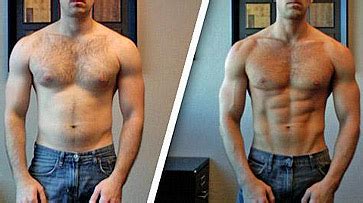How To Go From Bulk To Cut
Ronan Farrow
Mar 31, 2025 · 4 min read

Table of Contents
How to Go From Bulk to Cut: A Comprehensive Guide
So, you've spent the last few months diligently bulking, adding muscle mass and strength. Now, it's time to unveil those hard-earned gains by transitioning to a cutting phase. This isn't just about shedding pounds; it's about strategically reducing body fat while preserving the muscle you've worked so hard to build. This comprehensive guide will walk you through the process, ensuring a smooth and successful transition from bulk to cut.
Understanding the Fundamentals: Bulking vs. Cutting
Before diving into the specifics, let's clarify the core differences between bulking and cutting:
-
Bulking: A phase focused on maximizing muscle growth, often involving a caloric surplus (consuming more calories than you burn). This leads to an increase in both muscle mass and body fat.
-
Cutting: A phase centered on reducing body fat while maintaining as much muscle mass as possible. This usually involves a caloric deficit (burning more calories than you consume).
The transition from bulk to cut requires a strategic approach, minimizing muscle loss while maximizing fat reduction.
Phase 1: The Pre-Cut Assessment
Before initiating your cut, conduct a thorough self-assessment:
1. Body Fat Percentage:
Accurately assess your body fat percentage. This helps determine how aggressive your caloric deficit should be. Too aggressive a deficit can lead to muscle loss. Methods for measuring body fat include calipers, bioelectrical impedance analysis (BIA), or DEXA scans.
2. Current Diet & Training:
Review your current diet and training regimen. This provides a baseline for making necessary adjustments during the cutting phase. You might need to refine your macro ratios and training intensity.
3. Setting Realistic Goals:
Establish realistic goals. Avoid setting overly ambitious targets. A healthy and sustainable rate of fat loss is typically 0.5-1% of body weight per week.
Phase 2: Strategic Caloric Deficit and Macronutrient Adjustments
The cornerstone of a successful cut is a well-managed caloric deficit. This means consuming fewer calories than your body burns. However, the key is to find the sweet spot – a deficit that's significant enough to promote fat loss but not so drastic that it jeopardizes muscle mass.
1. Calorie Calculation:
Calculate your daily caloric needs using an online calculator (many are readily available). Remember, these are estimates. Track your progress closely to make adjustments as needed.
2. Macronutrient Ratio:
Maintain a high-protein diet. Protein is crucial for preserving muscle mass during a caloric deficit. Aim for 1 gram of protein per pound of body weight. Adjust carbohydrate and fat intake based on your individual response and preferences. Consider cycling carbs for added flexibility.
3. Prioritizing Whole Foods:
Prioritize whole, unprocessed foods. These are generally more nutrient-dense and will help you feel fuller on fewer calories.
Phase 3: Optimizing Your Training
Your training regimen should also adapt to support your cutting goals.
1. Maintaining Strength Training:
Continue to prioritize strength training. Lifting weights is vital for retaining muscle mass during a caloric deficit.
2. High-Intensity Interval Training (HIIT):
Incorporate HIIT to boost your metabolism and enhance fat burning. This doesn't have to be every workout; 1-2 HIIT sessions per week can be highly effective.
3. Listening to Your Body:
Pay close attention to how your body feels. Adjust your training intensity and volume as needed. Rest and recovery are critical.
Phase 4: Monitoring and Adjustments
Regular monitoring and adjustments are essential for long-term success.
1. Track Your Progress:
Keep a detailed record of your weight, body measurements, and how you feel. This provides valuable feedback and informs adjustments to your diet and training.
2. Adjust Your Caloric Intake:
If weight loss plateaus, slightly reduce your caloric intake or increase your activity level. Do this gradually to avoid creating too large a deficit.
3. Remain Patient and Consistent:
Remember that cutting is a marathon, not a sprint. Be patient, consistent, and focus on long-term sustainability.
Conclusion: A Sustainable Approach to Cutting
Successfully transitioning from bulk to cut is about more than just shedding pounds; it's about strategically building a body composition that reflects your hard work. By following this guide and prioritizing a balanced approach that combines smart nutrition, targeted training, and consistent monitoring, you'll be well-equipped to reveal the lean, muscular physique you've been working towards. Remember, consistency and patience are key.
Featured Posts
Also read the following articles
| Article Title | Date |
|---|---|
| How To Get Rid Of Green Head Flies | Mar 31, 2025 |
| How To Embroider Stretchy Fabrics | Mar 31, 2025 |
| How To Grow P Azurescens | Mar 31, 2025 |
| How To Get Rid Of Longhorn Beetles | Mar 31, 2025 |
| How To Dry Wood Slabs Without A Kiln | Mar 31, 2025 |
Latest Posts
-
How To Sanitize Pool After Dead Animal
Apr 02, 2025
-
How To Sanitize Mead Equipment
Apr 02, 2025
-
How To Sanitize A Dryer Without Bleach
Apr 02, 2025
-
How To Sand Crown Molding
Apr 02, 2025
-
How To Run For City Council In California
Apr 02, 2025
Thank you for visiting our website which covers about How To Go From Bulk To Cut . We hope the information provided has been useful to you. Feel free to contact us if you have any questions or need further assistance. See you next time and don't miss to bookmark.
